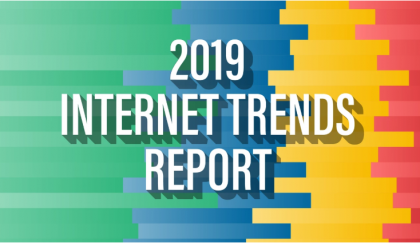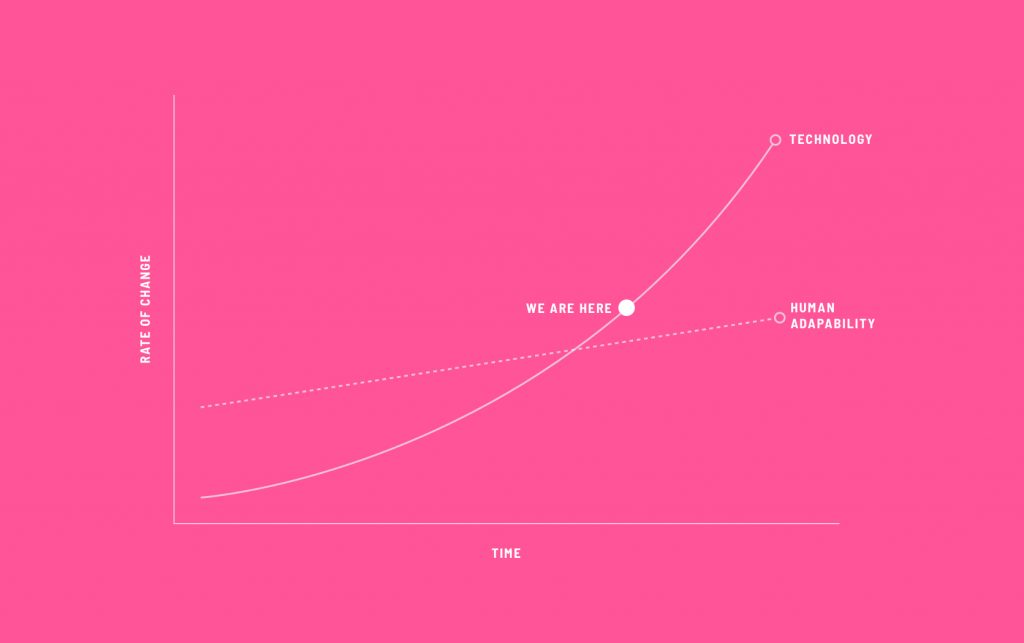2019 Internet Trends Report: Key Takeaways

The mother of all slide decks from the ‘Queen of the Internet’ dropped recently: Mary Meeker’s 2019 Internet Trends Report. She’s provided this breakdown of the digital-scape every year since 1995, back when my job title — digital content strategist — didn’t even exist.
Meeker’s resume ranges from former Wall Street securities analyst to current partner at the VC firm Bond Capital, and she was named one of the most powerful women in the world by Forbes in 2014. Her report gets into the minutiae of the tech world over the course of 333 slides — which even for someone who helps make Keynote decks for a living, is a lot. And so most graciously, here are the Cliffnotes:
By the Numbers
There are currently 3.8 billion internet users — more than half of the world’s population (and the following user stats should keep you humble, America).
Internet Users By Region:
- Asia: 53%
- Europe: 15%
- Africa/Middle East: 13%
- Latin American/Carribean: 10%
- North America: 9%
Global Internet Users:
- China: 21%
- India: 12%
- US: 8%
Internet Market Leaders:
- Microsoft
- Amazon
- Apple
- Alphabet
The only current population not using the internet would be offline for reasons of age, access or lack of interest. At this moment, nearly everyone is online who wants to/can be (or has to be). In that sense, we’ve reached a saturation point for internet usage and there are analog countertrends afoot that speak (correctly) to the virtues of a digital detox.
Slowing Down
- E-commerce, while still eclipsing brick-and-mortar retail sales, has dipped by 12% since last year
- Sales of smartphones in decline (sales of backup burners? worth statistical exploration)
- Even though online ad spending has surged, digital ad revenue is dwindling
What’s on the Rise
- Wearables (Smartwatches) and Voice Search (Alexa, Google Plus, Amazon Echo) are on an uptick
- Regarding online platforms, YouTube and Instagram are gaining the most (sorry, Tik Tok)
- Podcasts — 70 million monthly listeners! (listen to one of WDG’s latest)
- Freemium model accounts are up, exemplified by the likes of Spotify — free trials and unpaid tiers incentivize users — and if your digital service is quality, they will convert from no-cost consumption to paid subscription
- Customer acquisition costs — the marketing required to net new customers — is also going up, which speaks to the benefit of the freemium model not just for the consumer but for tech companies as well
- On average, an American adult spends over six hours a day with digital media — up 7% from 2018 — more than three of those hours are devoted to smartphone usage — all told, we’re spending almost half of our waking time with our faces and thumbs buried in digital devices, adding credence to the ‘internet addiction’ argument
- Visual storytelling, e.g., Instagram Stories, is exploding as people’s attention and capacity for reading content dips
- The world counts at least 2.4 billion interactive gamers (think Fortnite) — up from 6% last year
- Big Data continues its reign as users are having more and more privacy concerns
The Good, the Bad and the Ugly
Some heartening trends include the fact that over half of the most valuable tech companies were founded by first or second generation immigrants, employing nearly 2 million people in 2018. And Healthcare is getting more and more digitized, potentially crafting a world where more citizens have access to medical assistance via telemedicine and on-demand consultations.
But the ugly parts of the internet continue to metastasize as the anonymity of being online usually preys on our worst impulses. Half of US teens suffer through digital bullying, i.e., shaming, slurs, threats, etc. The web remains a fertile breeding ground for terrorist radicalization/policial polarization. Social, at its worst, is an echo chamber for outrage culture and vapid Influencers. Despite the inherent connectivity of digital, it can lead to people generally feeling more separated, anxious and alone.
Back to the Future
In short, the internet is doing what it’s always been doing since it came into existence — trending up. Billions of people use it every day, nearly all day — to socialize, work, play, date, entertain, shop, inform, and kill time. It’s not going anywhere and it’s only going to continue to grow.
Another Meeker takeaway from her epic deck was that the rapid rate of technological change is far outpacing our ability to keep up with said change. This should be kept in mind when thinking of our relationship to the internet — it’s always going to seem like it’s giving us too much overwhelming data, all at once (and it is).

But the internet is also just a tool — yes, a wildly sophisticated and potentially addictive one, but ultimately it’s an instrument that we wield as we wish. This speaks to the need for accountability and moderation when engaging in the digital space. The best of the internet is really the best of people and the worst of it is the worst of ourselves. The better we are, the better the internet will be.

